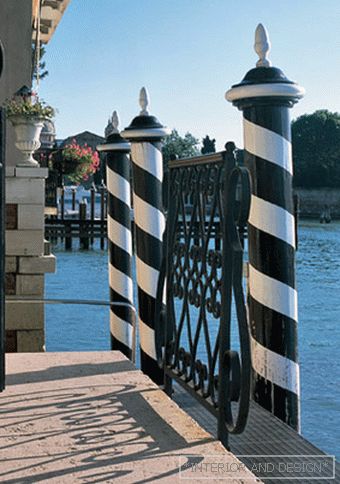Lasvit's experience is a striking example of creative and commercial success. In just ten years of operation, the brand has received international recognition and enriched the palette of modern lighting design with real masterpieces.
Related: Lasvit: avant-premieres from star designers
Lasvit was founded in 2007 by young entrepreneur Leon Yakimichem, who decided it was time to look at the craft traditions of the Czech Republic from a new angle. The brand cooperates with several family workshops in the city of Novy Bor, the ancient center for the production of the famous Bohemian crystal. In addition, Lasvit owns one of the oldest glass workshops, operating since 1414.
“Our mission is to convey the magical beauty of light through the design possibilities of glass,” says Leon Yakimich.
Rich traditions are only one of the components of the success of the light brand. From the very beginning, Lasvit management has relied on bright unusual design and technological innovations.
In 2011, Maxim Velcovsky, art director of the brand, became a well-known Czech designer, whose works are in the collections of the Victoria and Albert Museum, the New Pinakothek in Munich, the Design Museum in Lausanne. One of the most successful works of Velkovsky for Lasvit - Frozen lamps, in which the master managed to transfer the moment of turning water into ice: the liquid glass mass froze like water, retaining the smallest bubbles and irregularities.
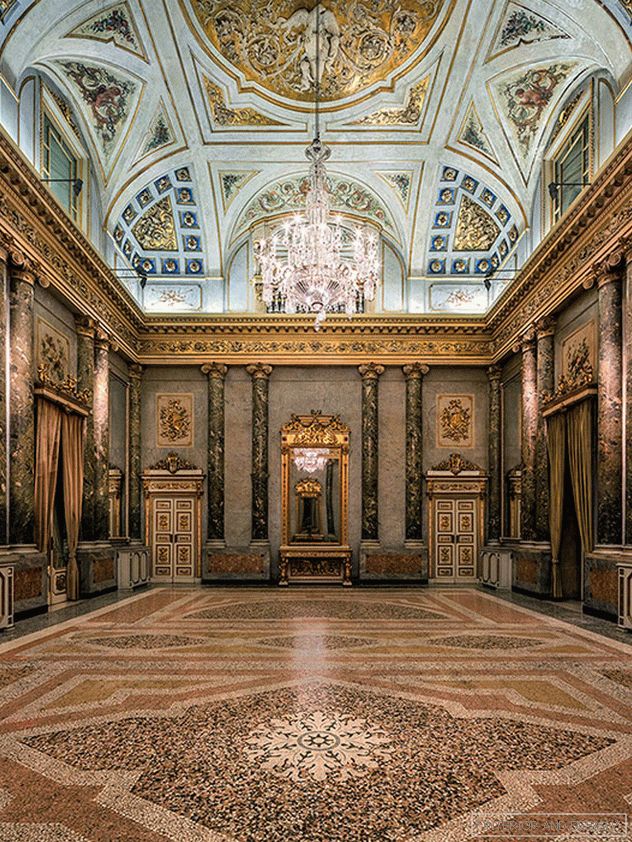 Lasvit Expositions at the Serbelloni Palace at Milan Design Week 2016.
Lasvit Expositions at the Serbelloni Palace at Milan Design Week 2016. 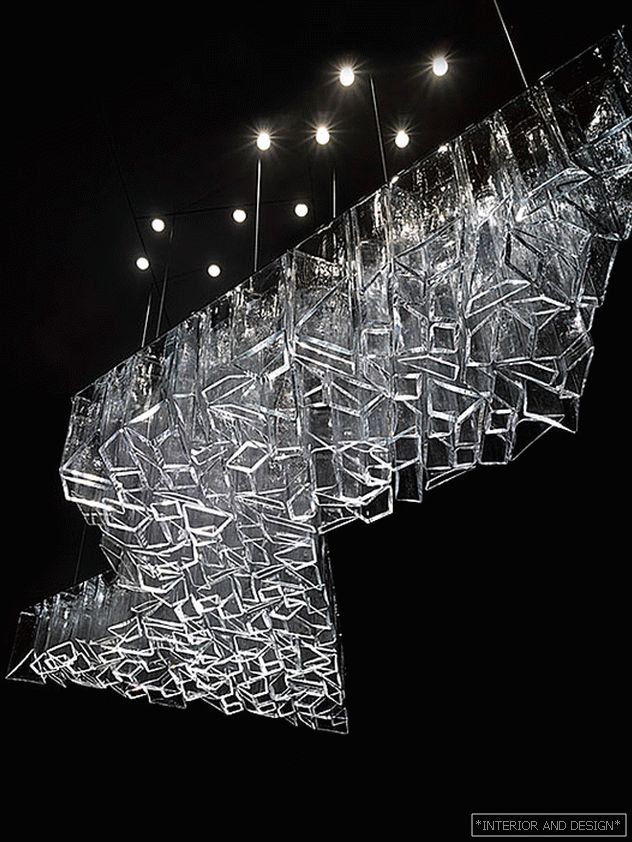 Pendant lamp Ice, Lasvit design by Daniel Libeskind.
Pendant lamp Ice, Lasvit design by Daniel Libeskind. 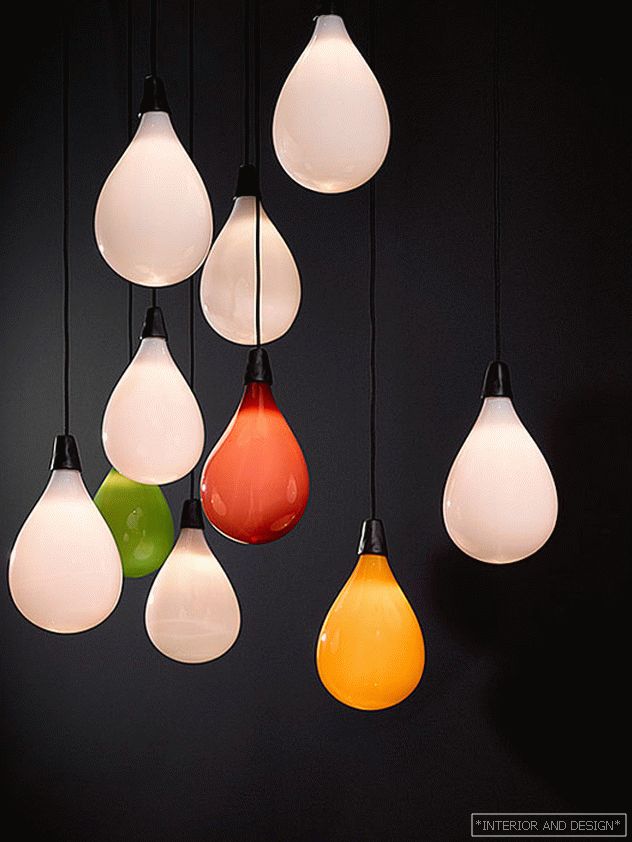 Collection of hanging lamps DAS POP, Lasvit, diz. Maarten Baas.
Collection of hanging lamps DAS POP, Lasvit, diz. Maarten Baas. 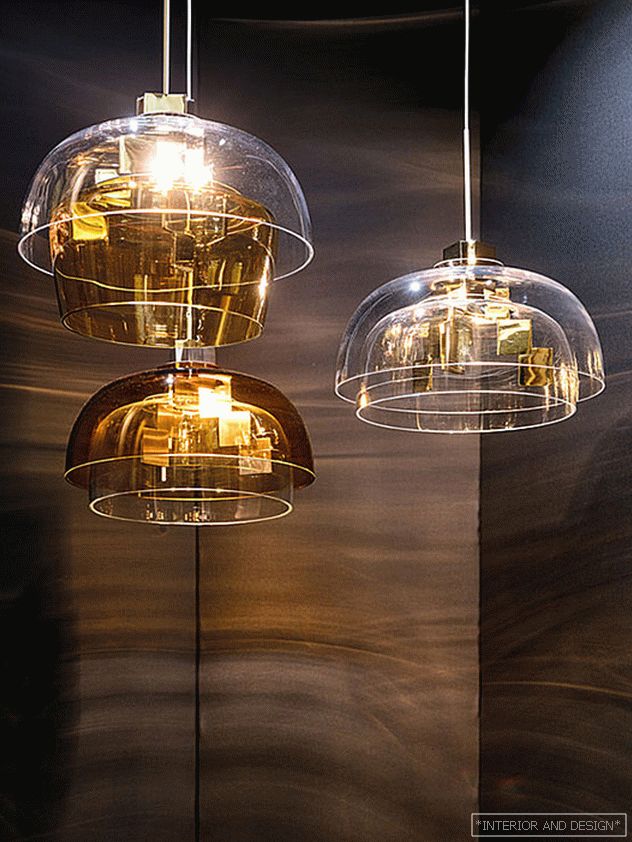 Suspension lamp STAIRS, Lasvit design by Atelier Oï.
Suspension lamp STAIRS, Lasvit design by Atelier Oï.  Pendant lights Growing vases, Lasvit, design by Nendo.
Pendant lights Growing vases, Lasvit, design by Nendo. Every year world stars of design and architecture are invited to create new collections. In 2011, Oki Sato from Nendo created the Light Sculpture Growing Vases, resembling a wonderful glass forest. It is noteworthy that the author of the installation retained the steel pipes through which its elements were blown.
In laboratories, Lasvit constantly researches and tries to expand the possibilities of glass as a material. The result of one of these studies was the installation of Ross Lovegrove for the Milan Triennial 2012. In the Liquidkristal (Liquid Glass) project, the designer tried to depict the dynamics of the elements — air, light, water — in curved Bohemian glass canvases, which were given a wavy relief. The matrix of waves that form the glass surface, borrowed from nature and developed using digital graphics.
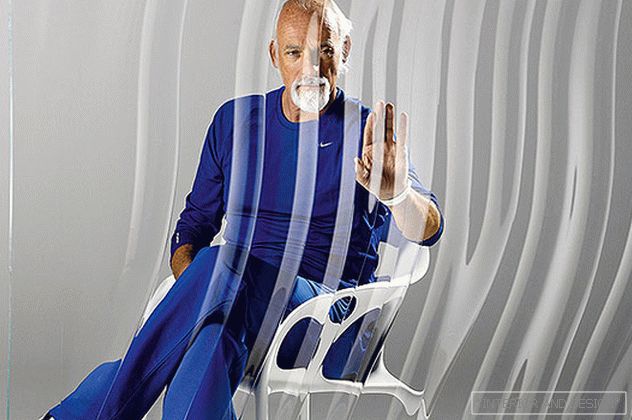 Liquid Crystal Project, Diz. Ross Lavgrouv.
Liquid Crystal Project, Diz. Ross Lavgrouv. In 2014, Daniel Libeskind designed the Ice chandelier, which feels the great architect’s handwriting, a model constructed from faceted modules that recalls his architectural experiments.
Another guest celebrity, the Dutchman Maarten Baas, in the Das Pop model, demonstrated his proprietary synthetic resin modeling technique on a metal frame.
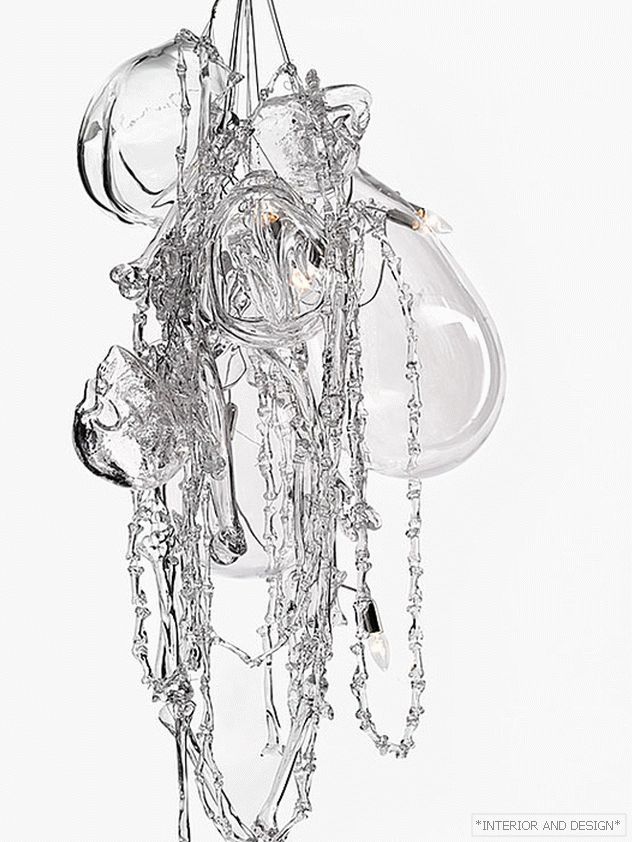 Chandelier Memento Mori, Lasvit, diz. Maxim Velkowski.
Chandelier Memento Mori, Lasvit, diz. Maxim Velkowski. 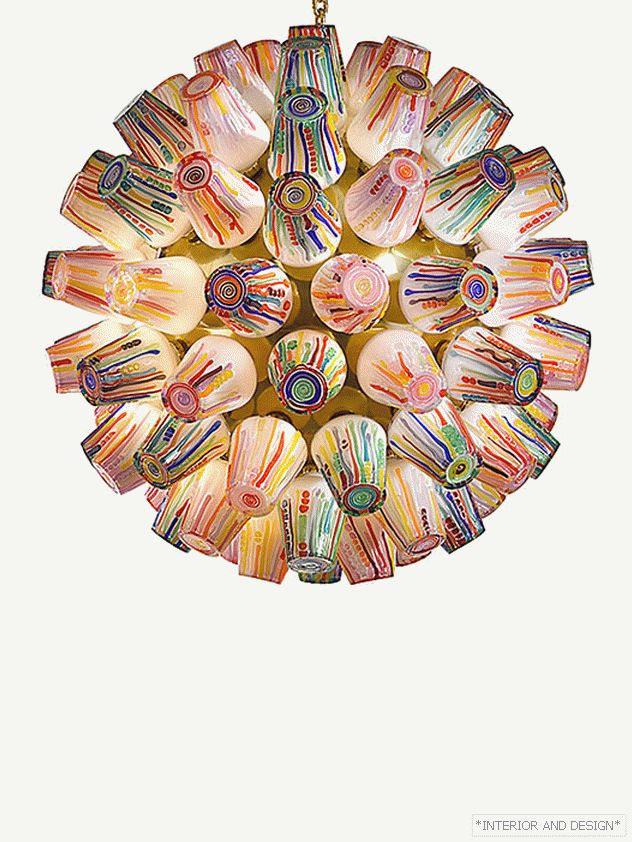 Lamp Candy, Lasvit, Diz. Fernando and Umberto Campana.
Lamp Candy, Lasvit, Diz. Fernando and Umberto Campana. 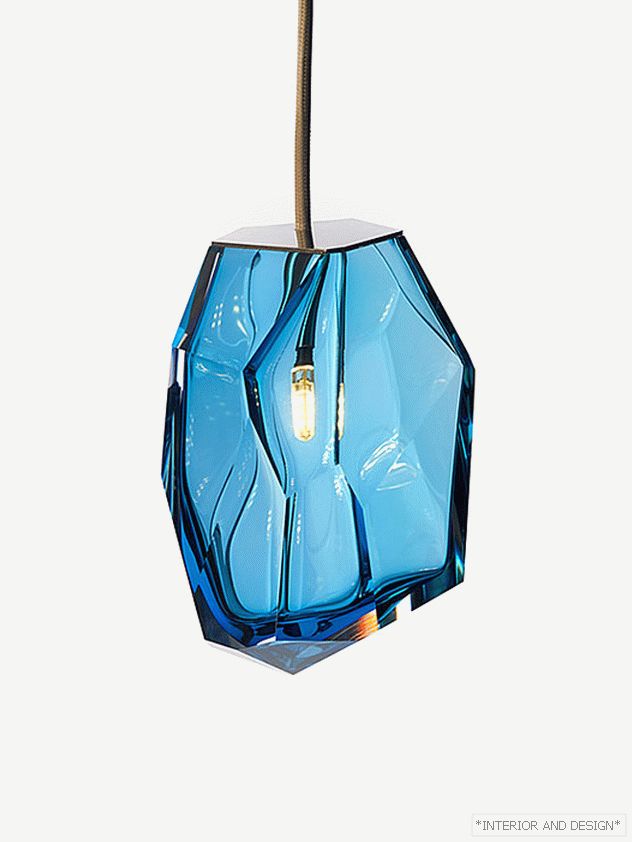 Light Crystal Rock, Lasvit, Diz. Arik Levi.
Light Crystal Rock, Lasvit, Diz. Arik Levi.  Lamp Frozen, Lasvit, Diz. Maksim Velkovski.
Lamp Frozen, Lasvit, Diz. Maksim Velkovski. 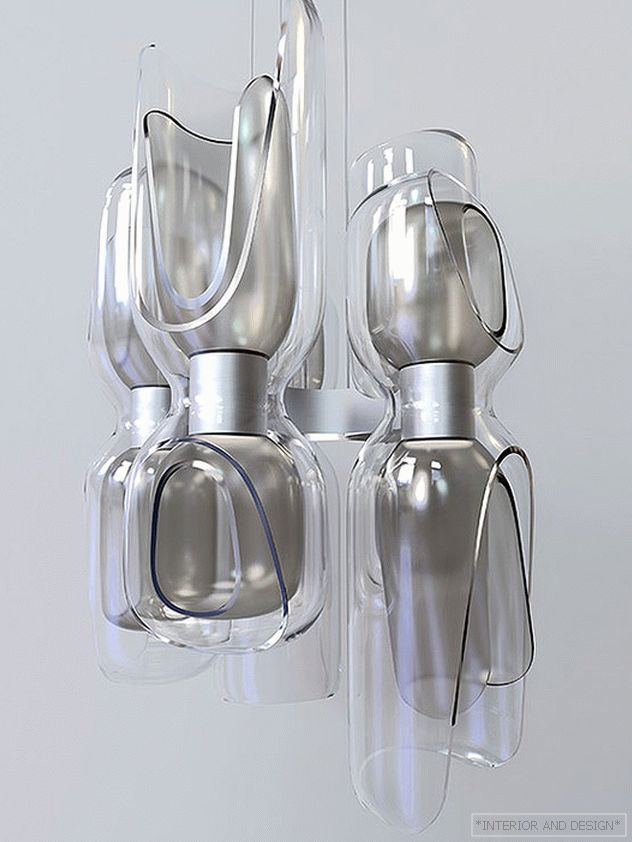 Eve, Lasvit, диз. Zaha Hadid Design.
Eve, Lasvit, диз. Zaha Hadid Design. 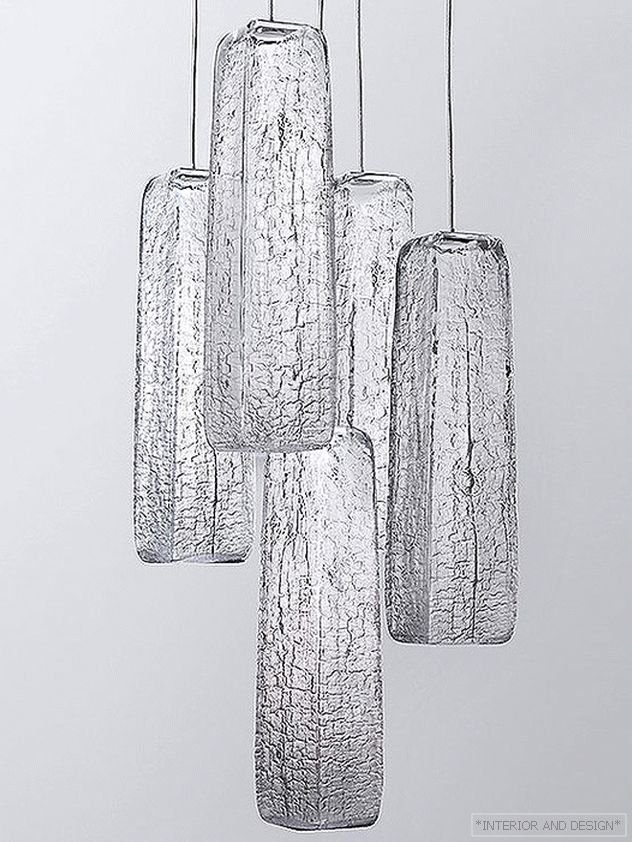 Yakisugi, Lasvit, Diz. Kengo Kuma.
Yakisugi, Lasvit, Diz. Kengo Kuma. In the same 2014, the company made a splash with its kinetic models. In Magnetic Libor Shostak (Libor Sostak), moving elements created waves of various configurations, and in the Alice model Petra Krausova (Petra Krausova), depicting a lotus flower, petals were moving, the disclosure of which could be controlled using a smartphone. Another masterpiece by Petra Krausova - an interactive model, Supernova, the movement of which can be controlled with gestures, became one of their hits Euroluce 2015.
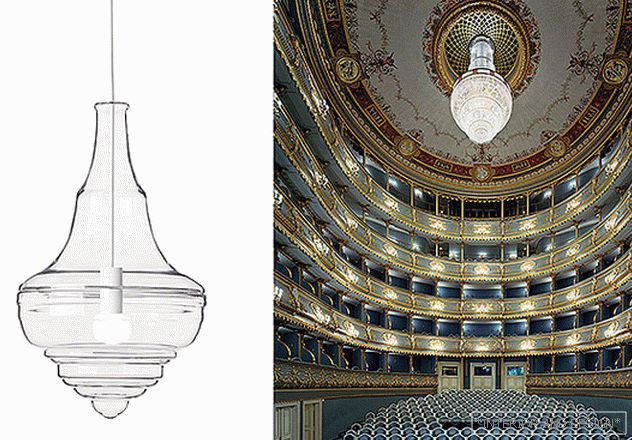 Neverending Glory, diz. Jan Plechac and Henry Wielgus.
Neverending Glory, diz. Jan Plechac and Henry Wielgus. Candy collection by Fernando and Umberto Campana (2015) was born under the impression of designers from the production Lasvit. “When we first arrived at the factory, it seemed to us that we were in the candy shop! The glass in its liquid state simply shocked us, ”Umberto Campana recalls.” So there were chandeliers, table lamps, dishes and vases, as if cast from multi-colored caramel.
Related: Lasvit: Bohemian Crystal in the Italian Palazzo
At Euroluce 2017 in Milan, Lasvit presented the exposition of Laterna Magica, which included works by Kengo Kuma, lamps by the Zahi Hadid bureau and much more. The Yakisugi Kengo Kuma collection is inspired by an ancient Japanese technique of charring the surface of the wood. In the process of casting the shades, molten glass charred the wood from which the molds were made, as a result, an imprint of the scorched texture remained on the glass surface.
Related: Yabu Pushelberg for Lasvit: Soft Light Geometry
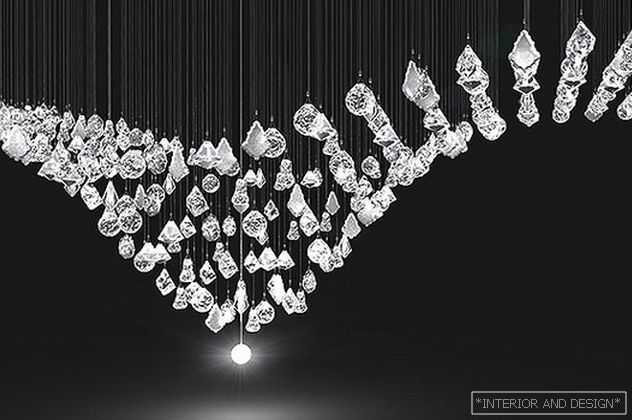 Magnetic, Lasvit, Diz. Libor Shostak.
Magnetic, Lasvit, Diz. Libor Shostak. One of the important activities of Lasvit is the creation of large-scale architectural installations, including light sculpture in the lobby of the Hotel Éclat in Beijing, a sculptural lamp at the Sake no Hana restaurant in London, the Diamond Sea installation at the Ritz-Carlton in Hong Kong, numerous glass compositions and crystal at the Jumeirah Hotel in the Etihad Towers tower in Abu Dhabi. Here Lasvit designed the ballroom and hotel lobby. The central element is the 16-meter light sculpture Oculus. The impressive design consists of more than 250,000 crystal elements.



